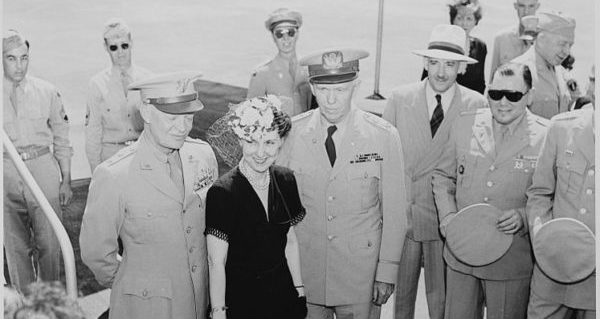 U.S. President Harry Truman signed the Marshall Plan into law 70 years ago this month. Named after then-U.S. Secretary of State George Marshall, the plan was aimed at the economic reconstruction of Europe in the immediate aftermath of the Second World War.
U.S. President Harry Truman signed the Marshall Plan into law 70 years ago this month. Named after then-U.S. Secretary of State George Marshall, the plan was aimed at the economic reconstruction of Europe in the immediate aftermath of the Second World War.
It got rave reviews.
Its own chief administrator characterized it as “the most generous act of any people, anytime, anywhere, to another people.” And Britain’s then-foreign secretary – the socialist Ernest Bevin – called it “a lifeline to sinking men.”
With the passage of time and the development of historical perspective, such encomiums are viewed as hyperbolic. But the Marshall Plan was still a good idea.
The problem it addressed was the shortage of dollars.
Undamaged by the war, the American economy was a prime source of goods that Europe couldn’t adequately supply for itself but also couldn’t pay to import. Understandably, American producers wanted remuneration in dollars. However, having exhausted their foreign exchange reserves during the war, dollars were something that the Europeans were short of.
What the Marshall Plan brought to the table was a fund to provide those dollars. For instance, if French farmers needed tractors that couldn’t be supplied locally, the plan would pay American tractor manufacturers to produce and deliver the goods to France. It was a bona fide transfer of tangible assets.
The funding for the plan came from the U.S. And although it had a loan component, the overwhelming bulk of the funds were in the form of a grant. In effect, they were a gift.
While the Marshall Plan wasn’t the first instance of American aid – 16.5 million tons of food had been shipped to Europe and Japan in 1945-46 – it was different in being specifically targeted at economic reconstruction. The intent was to help Europe back onto its feet so it could become rapidly self-supporting.
To accomplish this, the plan’s structure emphasized two things, both of which underlined the principles of responsibility and self-help.
First, the European governments had to submit co-operative proposals. They would specify what they needed and the plan’s administrators would vet those requests.
Second, the end recipient didn’t get a handout. The French farmer was expected to pay the French currency equivalent for his American tractor and those francs went to a French government counterpart fund that would recycle them to pay for such things as infrastructure rebuilding. To borrow a Keynesian term, each Marshall dollar had a multiplier effect that stimulated further economic activity.
Absent the Marshall Plan, the farmer wouldn’t have his tractor since it took dollars, not francs, to buy it. And by providing those dollars, the plan effectively funded a gift from the U.S. to France. But it was done in a manner calculated to encourage self-reliance.
Over its short lifespan – the final funds were disbursed in June 1952 – the Marshall Plan sent dollars to 16 countries. Approximately 55 per cent went to the United Kingdom, France and West Germany. None went to Eastern Europe, in large measure because Soviet dictator Josef Stalin prohibited the likes of Poland and Czechoslovakia from participating.
Stalin’s hostility went further. The powerful French and Italian communist parties were directed to impede the plan’s implementation where they could. And in the U.S., the Soviet-influenced presidential campaign of Progressive candidate Henry Wallace was vociferously opposed.
Beneficial as it was, though, the historical consensus suggests that the Marshall Plan’s influence has been oversold. Yes, it was valuable, but it didn’t singlehandedly save Europe. Not by a long stretch.
For one thing, European recovery had started before the Marshall dollars began to flow. And in the overall scheme of things, the size of the effort wasn’t nearly enough to do the job by itself.
There was also an unintended consequence.
Hubris being what it is, the success ascribed to the Marshall Plan encouraged the idea that the Americans could fix a country. Any country.
But as Marshall Plan official Thomas Wilson observed, the Europeans “knew how to build factories and bridges, things like that. They had just been bombed out and they needed steel, etc., which you could only get from one place in the world, and it took dollars to buy it. We provided them with the dollars, that’s all. …”
Turns out, what worked in the context of post-war Europe isn’t transferable. Life can be complicated.
Troy Media columnist Pat Murphy casts a history buff’s eye at the goings-on in our world. Never cynical – well, perhaps just a little bit.
The views, opinions and positions expressed by columnists and contributors are the author’s alone. They do not inherently or expressly reflect the views, opinions and/or positions of our publication.


